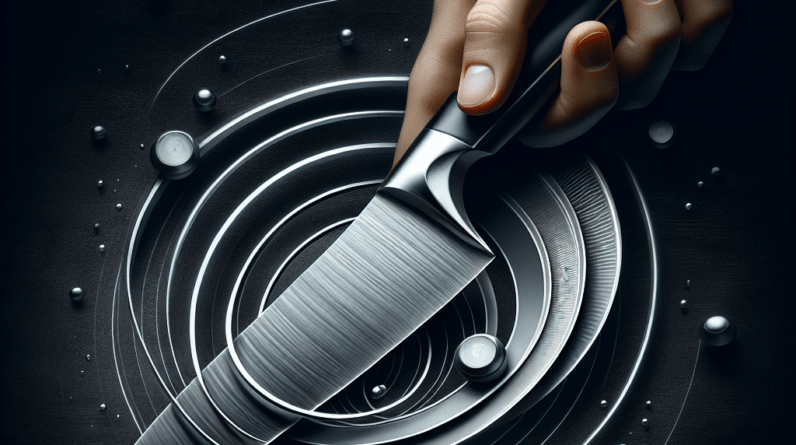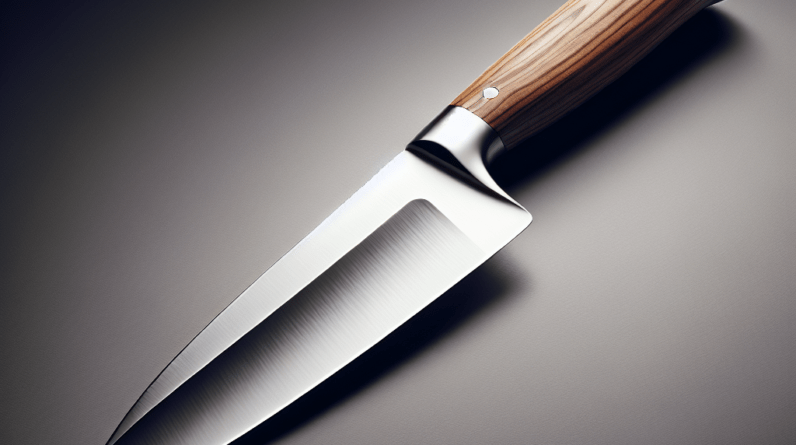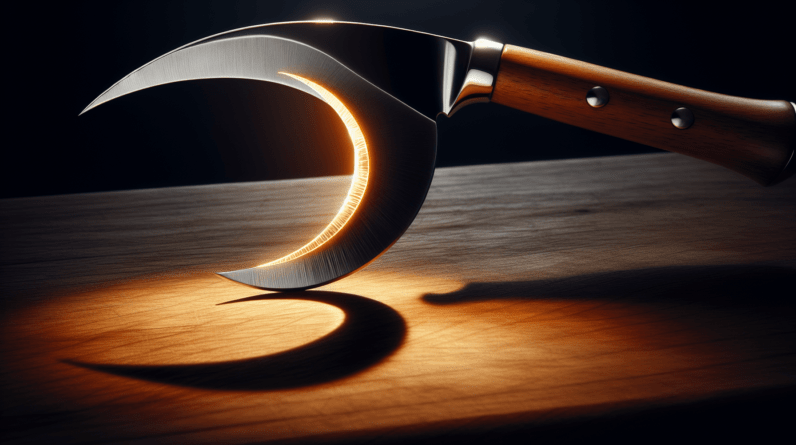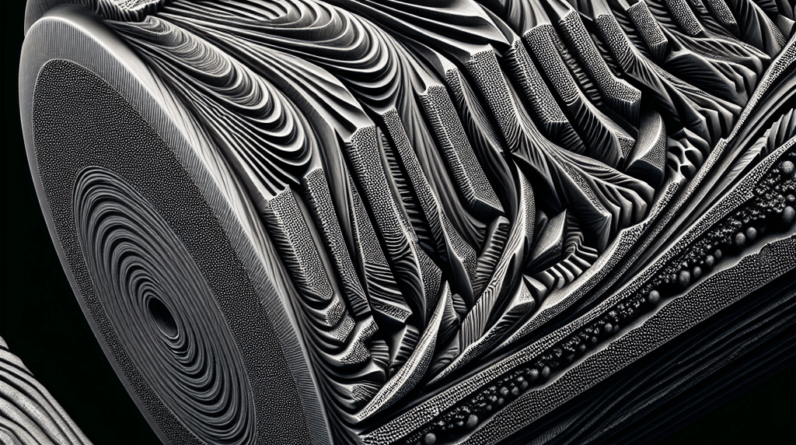Have you ever found yourself struggling with a dull knife in the kitchen? Maybe you’ve tried various techniques, but nothing seems to give you that razor-sharp edge you’re looking for. Don’t worry, we’ve got you covered! In this article, we’ll share our expert tips on how to sharpen a knife effectively. So say goodbye to frustration and hello to effortless slicing and dicing!
Choosing the Right Sharpening Tools
When it comes to sharpening knives, there are several options to consider. The choice of sharpening tools largely depends on personal preference and the level of expertise one has in the art of knife sharpening. Let’s explore some of the options available.
Manual sharpening tools
Manual sharpening tools, such as whetstones and sharpening stones, have been used for centuries to sharpen knives. These tools require some skill and practice to use effectively but can provide excellent results. They come in various grit levels, allowing you to choose the right coarseness for your specific needs.
Electric sharpening tools
Electric sharpening tools offer a more convenient and time-efficient approach to sharpening knives. These devices typically feature motorized grinding wheels that quickly remove metal from the blade to create a sharp edge. They are a popular choice for those who want a hassle-free sharpening experience without the need for manual skill.
Honing rods
Honing rods, also known as sharpening steels, are tools used to maintain the sharpness of a knife blade in between sharpening sessions. They are typically made of steel or ceramic and are used to straighten the edge of a knife. Honing rods are particularly effective for maintaining the edge of softer, stainless steel blades.
Understanding Knife Sharpening Angles
The angle at which a knife is sharpened plays a crucial role in determining its performance and durability. Proper sharpening angles can enhance the cutting efficiency and longevity of a knife. Let’s delve into the importance of sharpening angles and how to find the correct angle for your knife.
Importance of sharpening angles
Sharpening angles determine the geometry of the knife edge, which affects its cutting performance. Different angles are suitable for various tasks and types of knives. A lower angle, such as 15 to 20 degrees, creates a sharper edge but may sacrifice durability. On the other hand, a higher angle, around 25 to 30 degrees, provides more durability but sacrifices some cutting ability.
Finding the correct angle
To find the correct sharpening angle for your knife, you can consult the manufacturer’s guidelines or do some research online. Some knives come with recommended sharpening angles, while others require experimentation to find the optimal angle. It’s essential to consider the knife’s intended use and your personal preference when determining the sharpening angle.
Common sharpening angles
While the specific angle may vary depending on the knife and its purpose, there are some common sharpening angles that can serve as a starting point. For most kitchen knives, a sharpening angle between 15 to 20 degrees is suitable. Pocket knives and outdoor blades often benefit from a slightly higher angle, around 20 to 25 degrees. Ultimately, finding the right angle is a process of trial and error to achieve the desired sharpness and performance.

Preparing the Knife for Sharpening
Before diving into the actual sharpening process, it’s crucial to prepare the knife properly. Preparing the knife involves cleaning, inspecting for damage, and determining the sharpening needs of the blade.
Cleaning the knife
Cleaning the knife is an essential step in knife maintenance and sharpening. Make sure to remove any dirt, grime, or residue from the blade before sharpening. This can be done by washing the knife with warm water and dish soap or wiping it with a damp cloth.
Inspecting for damage
Inspecting the knife for any visible damage is crucial before sharpening. Look for chips, cracks, or other signs of wear on the blade. Sharpening a damaged knife can potentially worsen the condition or cause further harm. If you notice any significant damage, it’s best to consult a professional for repair or replacement.
Determining sharpening needs
Every knife is unique, and it’s important to determine the sharpening needs of the blade. Assess the blade’s current sharpness by cutting through a test material, such as paper or a ripe tomato. If the knife struggles to make clean cuts or tears the material, it likely requires sharpening. However, if it still performs well, you may only need to hone the blade using a honing rod.
Using Manual Sharpening Tools
Manual sharpening tools require a bit more skill and practice but can provide excellent results when used correctly. Let’s explore some popular methods of manual knife sharpening.
Whetstone sharpening
Whetstone sharpening is a traditional method that allows for precise control over the sharpening process. Start by soaking the whetstone in water for the recommended time, usually around 10 to 15 minutes. Place the stone on a stable surface, hold the knife at the desired angle, and gently move the blade across the stone in a sweeping motion, maintaining consistent pressure. Repeat this process, alternating sides until the desired sharpness is achieved.
Sharpening with a honing guide
A honing guide can be used in conjunction with a whetstone to ensure a consistent sharpening angle throughout the process. Attach the guide to the spine of the knife and adjust it to the desired sharpening angle. Following the same technique as whetstone sharpening, move the blade across the stone while keeping it in contact with the guide. This method helps maintain the angle accuracy, making it an excellent choice for beginners.
Sharpening with a sharpening steel
Sharpening steels, or honing rods, are primarily used for honing and maintaining the blade’s edge. However, they can also be used for minor sharpening. Hold the sharpening steel vertically in one hand and the knife handle in the other. Angle the knife at about 15 to 20 degrees and draw the blade across the steel in a sweeping motion, starting from the base of the blade and moving towards the tip. Repeat several times on each side of the blade.

Using Electric Sharpening Tools
Electric sharpening tools offer convenience and speed, making them popular among those seeking a quick and efficient sharpening process. Let’s explore how to use pull-through electric sharpeners and belt sander sharpeners.
Understanding how electric sharpeners work
Electric sharpeners typically consist of motorized grinding or sharpening wheels. These wheels rotate at high speed, removing metal from the knife blade to create a sharp edge. Some electric sharpeners have preset angles, while others allow you to adjust the sharpening angle to suit your needs.
Using pull-through electric sharpeners
Pull-through electric sharpeners are user-friendly and often come with built-in guides to ensure consistent sharpening angles. Start by plugging in the sharpener and selecting the desired angle, if adjustable. Place the knife blade into the designated slot and gently pull the knife through. Repeat this process several times, alternating sides, until the desired sharpness is achieved. Be careful not to apply excessive pressure or go too fast, as this may lead to overheating or damaging the blade.
Using belt sander sharpeners
Belt sander sharpeners are powerful tools that quickly remove metal from the blade to create a sharp edge. They consist of a motorized belt that runs over a wheel, allowing you to guide the knife across the belt for sharpening. Start by securing the belt sander to a sturdy surface and adjusting it to the desired angle. Turn on the belt sander and slowly move the knife across the belt, maintaining consistent pressure and speed. Take care not to grind the blade for too long, as it can lead to overheating or excessive metal removal.
Using Honing Rods
Honing rods, also known as sharpening steels, are essential tools for maintaining the sharpness of a knife blade. They straighten the edge of the blade, prolonging its sharpness in between sharpening sessions. Here’s how to use a honing rod effectively.
Understanding the purpose of honing rods
Honing rods are primarily used to realign the microscopic teeth on the blade that can become misaligned during use. This process, called honing, helps restore the blade’s sharpness quickly and efficiently, prolonging the time between full sharpening sessions.
Using a honing rod
To use a honing rod, hold it vertically in one hand with the tip pressed firmly against a stable surface. With the other hand, grasp the knife handle and hold the blade at a 15 to 20-degree angle against the rod. Starting from the base of the blade, draw the knife down the length of the rod in a sweeping motion, applying light pressure. Repeat this process several times on each side of the blade, alternating between sides.
Regular maintenance after honing
After honing, it’s important to clean the knife to remove any metal shavings or debris. Use a damp cloth or rinse the blade under running water, then dry it thoroughly. Properly drying the knife helps prevent rust and ensures it’s ready for its next use. Additionally, honing should be performed regularly to maintain the knife’s sharpness and prolong the time between full sharpening sessions.

Sharpening Techniques
While selecting the right sharpening tools and understanding the proper angles are essential, using the correct sharpening techniques is equally important. Let’s explore some key techniques to keep in mind when sharpening your knives.
Adequate pressure and control
Applying adequate pressure and maintaining control during the sharpening process is crucial for achieving the desired results. Avoid using excessive pressure, as it can lead to uneven sharpening or even damage the blade. Instead, focus on maintaining a consistent level of pressure throughout each stroke, ensuring the blade comes into full contact with the sharpening surface.
Maintaining a consistent angle
Consistency is key when it comes to sharpening angles. Whether using manual or electric sharpening tools, it’s important to maintain a consistent angle throughout the sharpening process to achieve an even edge. Pay close attention to the blade’s position and make any necessary adjustments to ensure a uniform angle from the base to the tip.
Number of strokes required
The number of strokes required to achieve the desired sharpness can vary depending on the condition and type of knife. Start with a moderate number of strokes, then assess the sharpness of the blade. It’s better to be cautious and gradually increase the number of strokes if needed, rather than over-sharpening the blade. Remember to alternate sides during the sharpening process to ensure balanced results.
Finishing and Polishing the Edge
Once you have achieved the desired sharpness, it’s time to finish and polish the edge to ensure smooth cutting performance. Finishing the edge helps remove any remaining burrs or imperfections left from the sharpening process. Let’s explore some methods for finishing and polishing the edge of your knife.
Stropping the knife
Stropping is a technique used to refine and polish the knife edge, resulting in an incredibly sharp blade. It involves moving the knife across a smooth, firm surface called a strop. Leather strops are commonly used, but other materials like wood or denim can also be effective. Apply light pressure and make sure to maintain a consistent angle as you slide the knife along the strop, repeating the motion several times on each side of the blade.
Using a leather strop
A leather strop provides a slightly more resilient surface compared to other materials, making it an excellent choice for finishing and polishing. Apply a small amount of polishing compound or honing paste to the surface of the strop. Holding the knife at a consistent angle, draw the blade across the strop, ensuring full contact with the compound. Repeat this motion several times on each side of the blade until you achieve the desired level of polish.
Applying a polishing compound
Polishing compounds, also called honing pastes, add an extra layer of fine abrasives that aid in the polishing process. Apply a small amount of the polishing compound to the surface of the strop or directly onto the blade. Work the compound into the edge by moving the knife back and forth along the strop, maintaining a consistent angle. Continue this process until you achieve the desired level of polish and sharpness.
Testing the Sharpness
After sharpening and polishing your knife, it’s important to test the sharpness before considering the job complete. Two common tests can help you evaluate the sharpness of your blade: the paper test and the tomato test.
Performing a paper test
The paper test is a quick and simple method to assess the sharpness of a knife. Grab a piece of paper and hold it at the top with one hand. With the other hand, carefully bring the knife blade down onto the paper, applying minimal pressure. A sharp knife should slice through the paper effortlessly, creating a clean cut. If the knife struggles to cut smoothly or tears the paper, it may require further sharpening or honing.
Performing a tomato test
The tomato test is particularly useful for assessing the knife’s ability to perform delicate tasks, such as slicing through soft fruits and vegetables. Take a ripe tomato and hold it firmly in one hand. With the other hand, slowly guide the knife through the tomato, aiming for a clean and precise cut. A sharp knife should glide through the tomato without crushing or squishing it. If the knife struggles or smushes the tomato, it may need additional sharpening or honing.
Safety precautions while testing
When performing these tests, it’s important to exercise caution to avoid accidental injuries. Always keep the knife blade away from your hands and fingers, ensuring a safe distance. It’s also a good practice to secure the cutting surface to prevent slipping or movement during the tests. Remember, a sharp knife poses its own risks, so handle it with care and respect.
Knife Sharpening Maintenance
Proper knife sharpening maintenance ensures that your blades remain in optimal condition and perform their best for an extended period. Let’s explore some essential maintenance practices to help you preserve the sharpness and longevity of your knives.
Cleaning and drying the knife
After every use, it’s important to clean your knife thoroughly to remove any food particles or debris that may have accumulated. Wash the knife with warm water and mild dish soap, taking care to avoid harsh abrasives or scouring pads that may damage the blade. Once clean, make sure to dry the knife completely to prevent moisture buildup, which can lead to rust or corrosion.
Storing the knife properly
Proper knife storage is essential for maintaining the blade’s sharpness and preventing accidents. Avoid storing knives loosely in drawers, as they can rub against other utensils or hard surfaces, leading to dulling or damage. Consider using a knife block, a magnetic strip, or blade guards to keep your knives safely organized and protected from unnecessary wear.
Regular honing and touch-ups
In addition to periodic sharpening sessions, regular honing sessions help maintain the sharpness of your knives. Use a honing rod to realign the blade’s microscopic teeth and restore its cutting efficiency. Depending on the frequency of use, a quick honing session every few weeks or a month can keep your knives performing optimally between sharpenings. Additionally, if you notice any loss of sharpness during use, you can perform touch-ups using a honing rod or a sharpening steel to maintain the edge.
With this comprehensive guide and the right tools at your disposal, you can confidently sharpen your knives to perfection. Remember, practice makes perfect, so don’t be discouraged if you don’t achieve razor-sharp edges right away. Embrace the process, take your time, and soon you’ll be enjoying the satisfaction of effortlessly slicing through anything with your expertly sharpened knives. Happy sharpening!









